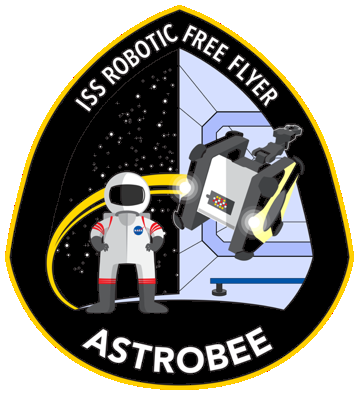 |
NASA Astrobee Robot Software
0.19.1
Flight software for the Astrobee robots operating inside the International Space Station.
|
 |
NASA Astrobee Robot Software
0.19.1
Flight software for the Astrobee robots operating inside the International Space Station.
|
This tool visualizes the GNC status of the robot. For using the tool, see the menu bar when the tool is open. There are many useful hotkeys, indicated in the menu bar.
You may use one of the following two communication methods:
This is the default communication method. Use this if you are running on simulation or inside the robot local network. It requires rospy dependencies.
You may use the --comm argument to set the ros value. Example:
You may also add --gantry, --granite, --bag, and --sim to start the appropriate roslaunch file as well. Another argument, --plan, lets you specify a plan file that can be started by pressing p. Please be advised, these arguments only work in ROS mode.
This communication method allows you to read data from DDS topics. Use this option if you want to get telemetry from a DDS enabled network (e.g. Astrobee on orbit, space-like ground networks, dds_ros_bridge on simulation). Note that many menu options are disabled when using this communication method.
You may use the --comm argument to set the dds value. Example:
This action will read the file located in ./scripts/communications/config.ini. It contains default values to run on simulation with DDS enabled. You may edit this file in order to add peers, change the participant name, set the DDS domain and/or add a public IP address for TReK communications.
Instead of modifying the configuration file, you may set these values by adding --robot_name, --use_ip, --domain and/or --public_ip. When used, these arguments will take precedence over the configuration file. If an argument is invalid or not present the script will fall back to the configuration file. Example:
Please be advised this tool will not read data from DDS topics until you manually set ekf, gnc, and pmc states to a value higher than 0 using the Ground Data System (Engineering Tab).
Additionally, make sure your firewall is not blocking DDS communications.
For on-orbit activities, when running inside of a TRek environment, you may use the --public_ip argument to state the ON_BOARD_PROXY_IP, --use_ip for the GROUND_PROXY_IP and --robot_name to set the agent. Example:
Note: Setting the --public_ip argument outside of a TReK environment may prevent the program from getting telemetry.
For on-orbit activities, when running outside of a TRek environment but using the DDS2 relay server, you may set the --use_ip argument to the DDS2 IP address and --domain to one of the DDS_GROUND_DOMAIN IDs. Example:
This tool makes use of standard python modules present in most Linux and Windows implementations.
If you followed the installation instructions for this repository, you should already have all the needed dependencies to run this tool in ROS mode.
In order to run this tool in DDS mode you need an additional dependency:
You may use this program as a standalone tool only in DDS mode. You may copy the whole gnc_visualizer folder to the destination computer and install missing dependencies.
Depending on your system, you may need to install the following packages:
Any other usage is not recommended.
Here you will find suggestions on how to install some dependencies needed for this tool usage.
Make sure Python 2.7.x is installed on your computer. You may get it from your package manager or from the official website
If you followed the Astrobee install, Python should be already installed
You may install pip using apt or yum. Otherwise, try the following:
(Alternative)
Install the RTI software
This software has been tested on: